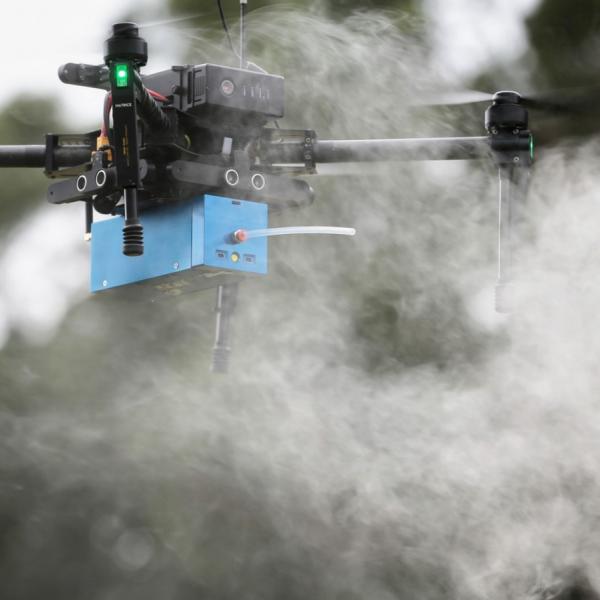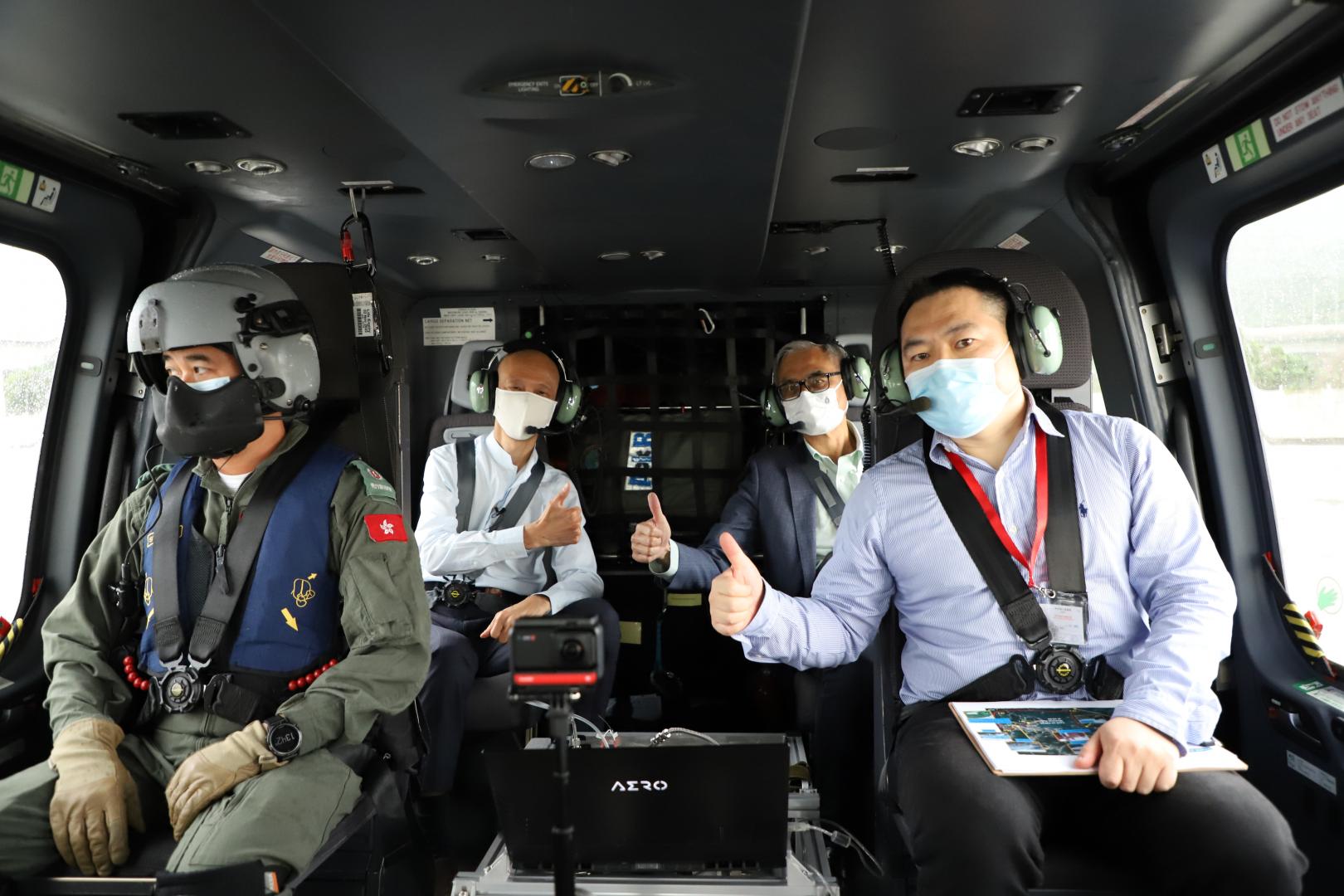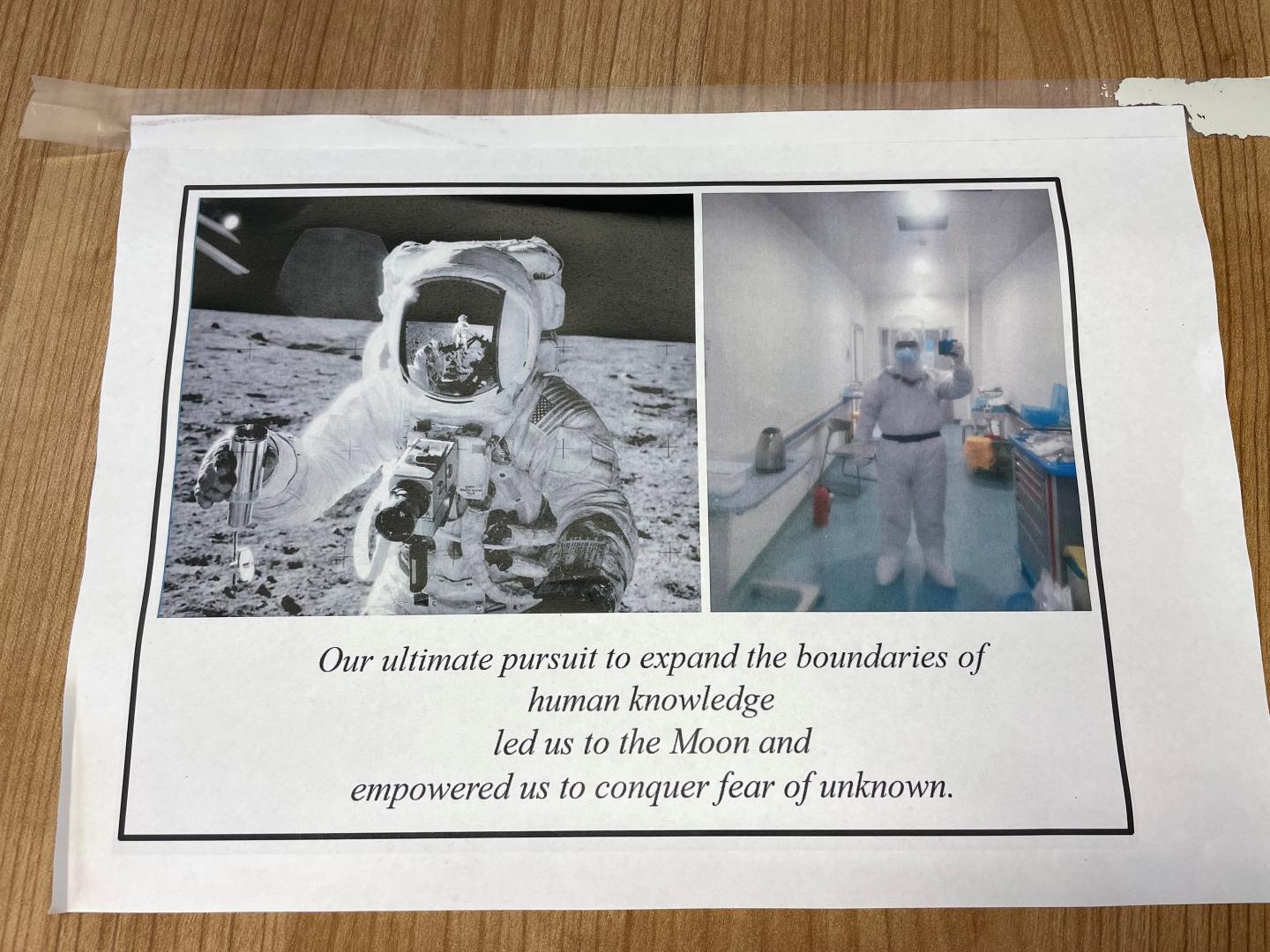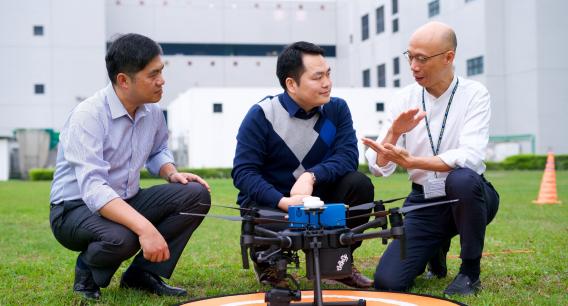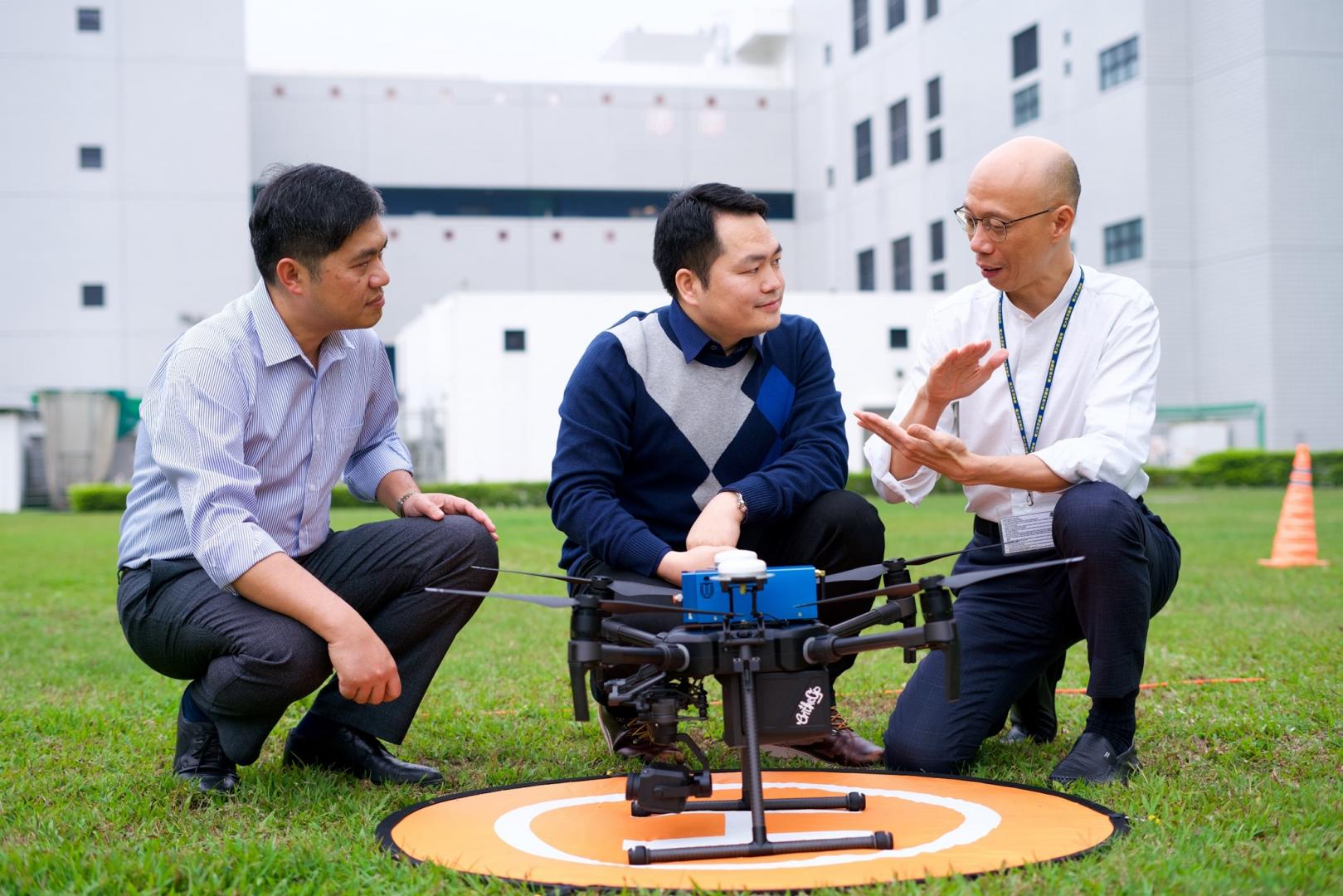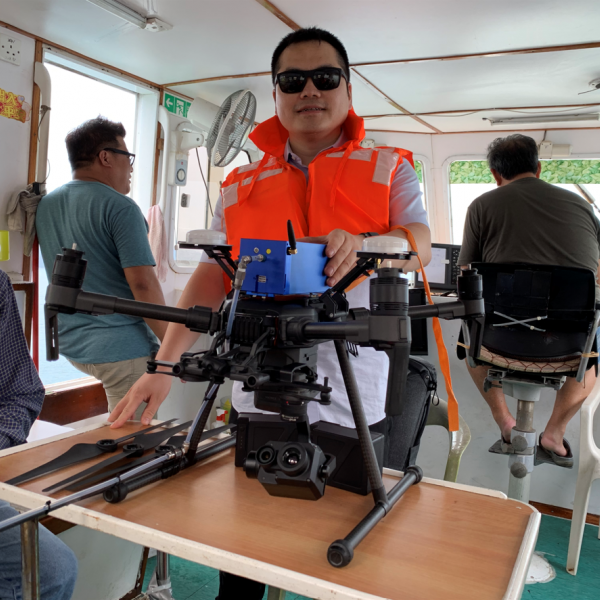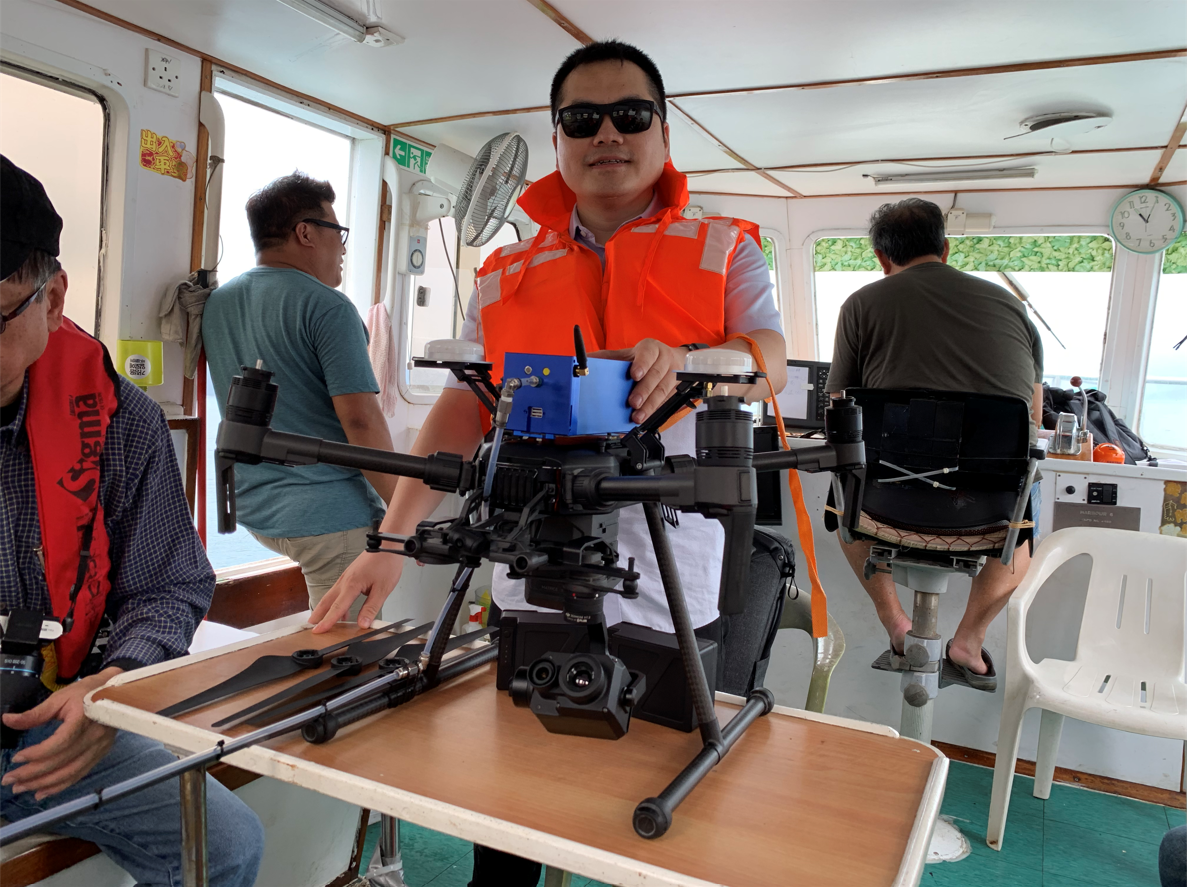Countering an Invisible Enemy
Are you one of the nine in 10 people worldwide whose breathing is adversely affected by airborne pollutants such as dust, dirt, nitrogen dioxide, and sulphur dioxide? In 2016 alone, such particulate matter, often invisible, caused 4.2 million deaths globally and slashed some US$38 billion off China’s GDP.
“The invisible pollutants in the air can sometimes damage the health of public and the environment.” warns Prof. NING Zhi, HKUST’s Associate Professor, Division of Environment and Sustainability (ENVR). A respected authority on developing and using highly effective environmental monitoring sensors, Prof. Ning is at the forefront of Hong Kong’s battle to improve its air quality.
Tiny sensors, big potential
Prof. Ning’s first taste of the effects of air pollution dates back around two decades ago when he joined a team to collect information about diesel exhaust in an underground mine in Wisconsin, US. “The fact that my throat dried up quickly every time the engine was on said far more to me than simply abstract data or figures.”
As an expert panel member of the World Health Organization and World Meteorological Organization, Prof. Ning enthusiastically advocates small, low-cost, but professional microsensors. Widely regarded as paradigm-shifting tools, microsensor technologies have enabled the professionals to expand their research capacity and empowered the public to monitor the air for self-protection. “Often palm-sized, such equipment can measure a range of pollutants easily, far more powerful than traditional bulky analyzers.” says the professor.
In 2015, Prof. Ning and his colleagues worked with Hong Kong’s Environmental Protection Department (EPD) to engineer a health risk monitoring network covering key locations on that year’s Standard Chartered Hong Kong Marathon. The following year, they pioneered the city’s first ever mobile air sensor network by using bus-mounted air pollutant monitors capable of evaluating pollutant concentrations as the buses crisscrossed the city.
Smaller, faster, and better
A firm believer in seamlessly integrating the incremental advances on which smaller, faster, and more accurate sensors will be built with his research projects, Prof. Ning eagerly seizes every possible opportunity to push the technological envelope.
Shortly after the professor moved to HKUST in 2017, ENVR made a major breakthrough in delivering solutions using the new sensor-based technology. The Division took a further step forward in January 2019 when the Hong Kong Government was calling technological support from scholars in enforcing legislation aimed at slashing harmful emissions from ships.
“The government urgently needed a more effective means of verifying whether ocean-going vessels in local waters were complying with the low-sulphur fuel requirement,” says Prof. Ning. In the past, such monitoring required a complex and time and labour-intensive processes which involved visual inspection of and analysing individual vessels’ logbooks, smoke opacity levels, and lab analysis of fuel samples. “By the time a problem had been identified, errant ships were usually far outside our waters.” the professor adds.
In no time at all, Prof. Ning’s inner drone enthusiast came up with an innovative solution. “I enjoy taking stunning aerial pictures with drones, but that isn’t all they are capable of,” says Prof. Ning, who promptly set about using the tiny craft as light, flexible scanning tools for “sniffing” out air pollutants. “The marriage of drone and sensor was a very natural one for me,” the professor adds.
Equipped with powerful infrared cameras, Prof. Ning’s Unmanned Aviation Vehicle (UAV) -based sensor systems can track vessels at sea and fly to their smoke plumes. Capable of measuring fuel sulphur content, such airborne sensors made it much easier to screen and catch transgressors by delivering results within two minutes.
“We have spent lots of efforts in optimizing the technology and protocol. While each drone’s payload was very limited, our sensor system only weighs around 700 grams. With a minimum battery life of four hours and excellent second-by-second data transmission capability, the system not only does the job, but does it very well,” says Prof. Ning proudly.
Indeed, the system proved so effective that Shenzhen’s Maritime Safety Administration quickly caught two violators when it adopted the platform for regional use after passing its own coastal emission control area in tandem with Hong Kong.
A passion for unknown
Prof. Ning initially became interested in urban air pollution while researching a Master’s degree in internal combustion, an “ancient” domain dating back to the 18th century. “When combustion takes place in a modern engine, the processes are complicated and much remains unknown to date. I was intrigued by how to go beyond the unknowns and design new technologies to combat the emissions.”
He then expanded his interest in air pollution by studying for a PhD in Environmental Engineering at University of Southern California. “As air quality is such a broad specialty, I was exposed to a wide range of topics that covered everything from technological advancements in air monitoring techniques to pollutants’ impacts on human health.”
Prof. Ning then spent a fruitful six years gaining enriched experience in the US. In 2011, he returned to Hong Kong and began to join hands with the city’s peer scholars to promote sustainability and cleaner air.
When asked to sum up the inspiration that fuels his passion, he pointed to a poster he created for his office wall. The artwork juxtaposes a photo of astronaut Alan Bean holding a lunar soil sample collected during his Apollo 12 mission with an image of his colleague in Wuhan hospital clutching a bioaerosol sampler shortly after COVID outbreak in early 2020.
With speculation about the frightening and mysterious new virus still swirling, he acted quickly to fight against the virus. Leveraging on his knowledge in aerosol physics gained from his PhD studies, Prof. Ning set out to conduct aerodynamic analysis on the virus to study whether or not the new virus could spread through the air. “Who would have imagined experience from decades ago would become so critical now?” says the professor. “Findings on the spread of airborne virus have a very down to earth application—that’s why we are advised to ‘close the toilet lid before flushing’”.
Prof. Ning sees the poster as perfectly encapsulating both his scientific philosophy and his burning desire to conduct research of great social interests and benefits. As the poster’s caption puts it: “Our ultimate pursuit to expand the boundaries of human knowledge led us to the Moon and empowered us to conquer fear of unknown”.
“Both the astronaut and the scientist showed such bravery when facing life-or-death issues,” he says admiringly. “I am humbled to be part of the effort to reach or even extend the boundaries of human knowledge myself.”
The next great adventure
Still only in his early-40s, Prof. Ning relishes the challenge of resolving complex problems and creating even larger impact.
To this end, he recently joined task force with his HKUST colleagues and government officials in EPD and Government Flying Service. Set to last three years, the new task force’s aim is to assess the formation and transport of ozone, one of the Greater Bay Area’s most thorny air pollution problems in this last decade.
Leveraging fleets of ships and helicopters equipped with real-time air sensing and sampling technologies, the team is now monitoring air pollutants in and around Hong Kong, from above the waters to altitudes of up to 600 meters. “Acquiring detailed knowledge of ozone concentrations and distributions at such heights will be incredibly useful,” says Prof. Ning.
And by doing this, the partnership will facilitate the creation of a multi-lateral vertical profile of ozone pollution encompassing land, sea, and air. More comprehensive than similar studies in terms of both breadth and depth, the initiative will significantly enrich our understanding of ozone’s origins, distribution, prevalence, and influence in Hong Kong and the Greater Bay Area. “The insights we harvest will enable us to take a fresh look at the problem and accelerate the formation of science-based policies for effective regionwide control,” Prof. Ning adds.
With the Government’s Clean Air Plan 2035 committing Hong Kong to the further tightening laws governing sulphur content limits and ozone management, the professor’s trailblazing drone-sensors and ozone research are sure to play a vital role for the years to come.
“As scientists, we have an obligation to be there and offer our knowledge to those who need our support in the community and society,” Prof. Ning concludes.

